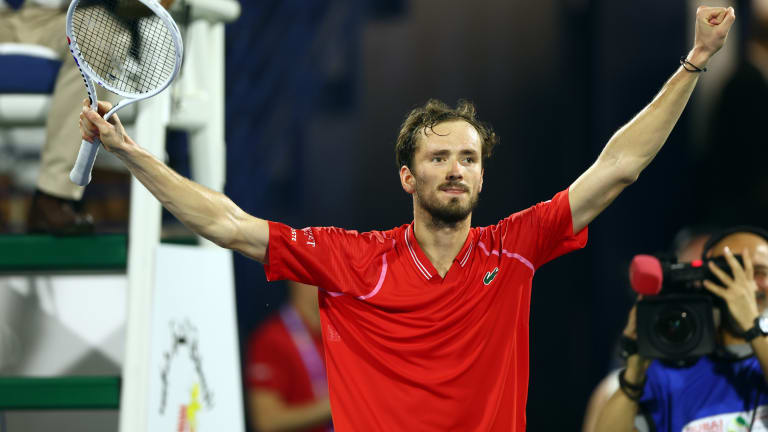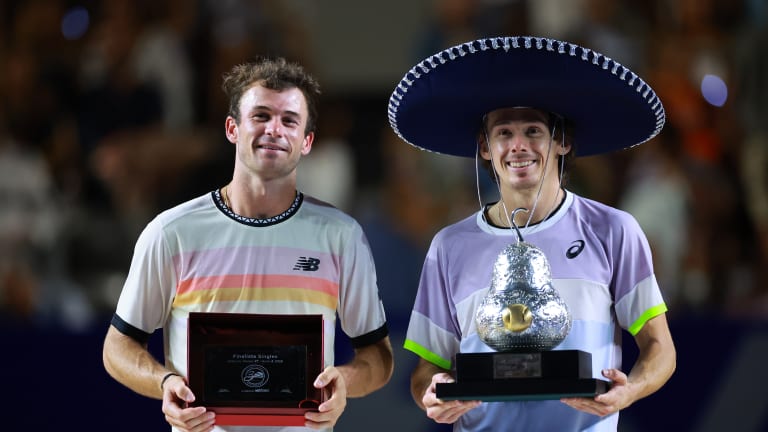Weekend Winners
Alex de Minaur, Daniil Medvedev each show something in Acapulco, Dubai triumphs
By Mar 05, 2023Weekend Winners
How Carlos Alcaraz put a 'difficult month' behind him with his first Monte Carlo title
By Apr 13, 2025Weekend Winners
With clay titles, Jenson Brooksby and Jessica Pegula made 2025 all the more promising
By Apr 07, 2025Weekend Winners
Jessica Pegula and Emma Navarro got up after early-season stumbles to win their first titles of 2025
By Mar 03, 2025Weekend Winners
Carlos Alcaraz, Belinda Bencic or Denis Shapovalov: Whose title run could be the most significant for 2025?
By Feb 10, 2025Weekend Winners
Felix Auger-Aliassime—surprise, surprise—becomes the first two-title men’s champ of 2025
By Feb 02, 2025Weekend Winners
The Top 5 most important developments of a manic first week of the 2025 tennis season
By Jan 05, 2025Weekend Winners
Giovanni Mpetshi Perricard, Jack Draper show big-match poise in Basel, Vienna
By Oct 27, 2024Weekend Winners
Antwerp champion Roberto Bautista Agut represents a generation that refuses to go quietly
By Oct 20, 2024Weekend Winners
"What just happened?" Alexei Popyrin joins Jessica Pegula in making pre-US Open statement
By Aug 13, 2024Alex de Minaur, Daniil Medvedev each show something in Acapulco, Dubai triumphs
In Dubai, Medvedev showed off the game that he, and we, have been waiting for. In Acapulco, de Minaur showed what he means when he says, “I’ve got a whole lot of heart in this little body of mine.”
Published Mar 05, 2023
Advertising
Advertising

Medvedev has won 14 straight matches in his three-tournament winning streak, and has lost just three sets.
© Getty Images
Advertising

In Acapulco, de Minaur showed what he means when he says, “I’ve got a whole lot of heart in this little body of mine.”
© Getty Images